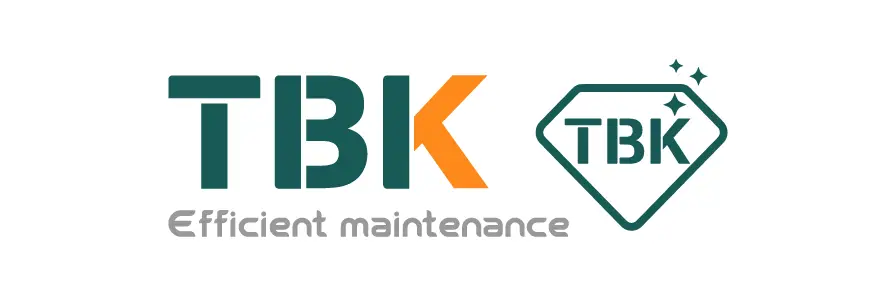A Repair Shop’s Guide to Using a Laser Machine for iPhone Back Glass Removal
The repair process for cracked iPhone back glass has evolved significantly. What was once a high-risk, time-intensive manual task can now be streamlined using specialized laser machines. This guide provides an objective overview of how these machines work, their role in a professional repair workflow, and the key considerations for technicians.
Understanding the Laser Removal Process
A laser machine for iPhone back glass removal works by targeting the strong adhesive layer that bonds the glass panel to the phone's frame. The laser's energy is precisely calibrated to burn or weaken this adhesive, turning it into a fine powder or ash without damaging the metal frame or underlying components.
This process drastically reduces the physical force needed to separate the glass, minimizing the risk of prying-related damage to the frame or internal parts like the wireless charging coil.
A Typical Step-by-Step Workflow
While specific machine controls vary, the general process for a professional repair shop follows these steps:
-
Device Preparation: The iPhone is disassembled. Critical components, including the logic board, battery, cameras, and Face ID module, are carefully removed to prevent any risk of damage from heat or glass shards during the removal process.
-
Machine Setup: The phone's empty housing is placed securely in the laser machine.
-
File Selection: The technician selects the correct iPhone model from the machine's software. Machines like the TBK-958F often come with a built-in computer and pre-loaded drawings, which ensures the laser path is accurate for that specific model's layout.
-
Laser Operation: The laser begins its pass, tracing a precise pattern to ablate the adhesive. A built-in fume extraction system is essential during this stage to safely remove the smoke and particles generated.
-
Glass Removal: After the laser pass (or passes) is complete, the weakened adhesive allows the technician to easily pry and lift the shattered glass pieces away from the frame.
-
Surface Cleaning: Any remaining adhesive residue and soot are thoroughly cleaned from the frame to ensure a perfect, flush fit for the new glass.
-
New Glass Installation: A new back glass panel is installed using high-quality, cold-press adhesive, and the device is reassembled.
Laser Removal vs. Traditional Manual Methods
For repair businesses, the primary advantages of laser removal are efficiency and consistency. The traditional method, which relies on high heat (heat guns) and manual prying tools, is operator-dependent and carries a higher risk of collateral damage.
Comparison of Repair Methods
| Feature | Laser Machine Method | Traditional (Heat Gun) Method |
| Average Repair Time | 15 - 30 minutes (for laser/removal) | 1 - 3 hours |
| Risk of Component Damage | Very Low (when disassembled) | High (risk of overheating battery, plastic, or coils) |
| Risk of Frame Damage | Very Low (no prying on frame) | Moderate to High (prying can bend or scratch frame) |
| Consistency | High (repeatable results) | Low (depends on technician skill) |
| Fume Generation | Yes (requires extraction) | Minimal (some fumes from melted adhesive) |
Key Machine Features and Considerations
When evaluating a laser machine for back glass removal, several features are important for a safe and efficient workflow.
Laser Type and Power
Most machines designed for this task use a fiber laser. A power rating of around 20W is common for this application, providing a balance of speed and precision. This power is sufficient to break down the adhesive quickly without requiring excessive heat.
Essential Features for Professional Use
-
Built-in Computer & Drawings: This eliminates guesswork. Having pre-loaded, accurate templates for all iPhone models is critical.
-
Fume Extractor: This is a non-negotiable safety feature. The process generates smoke and fumes from the adhesive that must be vented. Models like the TBK-958F integrate a fume extractor directly into the chassis.
-
Automatic Focusing: A one-touch auto-focus system saves time and ensures the laser is at the correct focal height for optimal results, which is critical for consistency.
-
Compact Footprint: For many repair shops, space is a premium. All-in-one designs that combine the laser, computer, and extractor into a single, compact unit are highly practical.
Frequently Asked Questions (FAQs)
Q1: Is it safe to use a laser on an iPhone?
A1: Yes, when the correct procedure is followed. The primary safety measure is to always remove the internal components (logic board, battery, cameras) before placing the phone housing in the laser machine. This eliminates any risk of damage to sensitive electronics. Secondly, a proper fume extraction system must be used.
Q2: Can the laser damage the wireless charging coil or MagSafe magnets?
A2: Not if the procedure is done correctly. The laser is precisely focused on the adhesive layer under the glass. The pre-loaded drawings in the machine's software are designed to avoid these specific components. Removing all internals, as mentioned in the first step, is the best way to guarantee safety.
Q3: How long does the entire laser repair process take?
A3: The laser portion itself is very fast, often taking 10-20 minutes depending on the model. However, the total repair time includes disassembly, cleaning the residue, and reassembly. A realistic end-to-end time for a professional technician is typically 90-120 minutes.
Q4: What causes the "soot" or black powder, and is it a problem?
A4: The black powder is the vaporized adhesive and paint from the underside of the glass. A properly functioning, integrated fume extractor will remove the vast majority of this during the laser process. Any remaining residue is easily cleaned off with alcohol and a brush before installing the new glass.
Q5: Can these machines be used for other things?
A5: Yes. Many fiber laser machines, including the 20W TBK-958F, are also capable of engraving and marking. This allows repair shops to offer additional services like custom engraving on metal phone frames, tools, or other accessories.






























